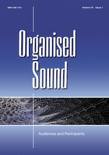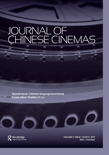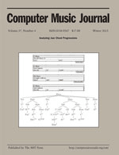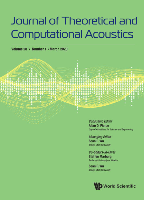
Organised Sound
Scope & Guideline
Unveiling New Dimensions in Sound and Composition
Introduction
Aims and Scopes
- Interdisciplinary Sound Research:
The journal focuses on the convergence of various disciplines within sound studies, including musicology, acoustic ecology, media studies, and technology. It encourages contributions that examine sound from multiple perspectives, fostering a rich dialogue between art, science, and society. - Innovative Sound Practices:
'Organised Sound' emphasizes contemporary practices in sound art, including electroacoustic music, live coding, and participatory sound art. The journal highlights the role of technology in shaping new forms of sonic expression and creativity. - Socially Engaged Sound Art:
The journal promotes research that addresses social issues through sound, emphasizing participatory practices and community engagement. It showcases how sound can amplify marginalized voices and contribute to social justice initiatives. - Historical and Theoretical Perspectives:
In addition to contemporary practices, the journal also delves into historical analyses and theoretical frameworks that inform current sound practices. This includes explorations of past movements, technologies, and cultural contexts that have shaped the sound arts. - Exploration of Acoustic Environments:
The journal is dedicated to the study of soundscapes and acoustic environments. Contributions often explore the relationship between sound and place, highlighting how auditory experiences can inform and transform our understanding of environments.
Trending and Emerging
- Live Coding and Algorithmic Music:
There is a significant increase in research related to live coding practices and algorithmic music, reflecting a growing interest in the intersection of coding, performance, and sound creation. This trend highlights the role of technology in shaping new musical languages and practices. - Participatory and Community-Based Sound Art:
The journal has seen a rise in publications that emphasize participatory sound art and community engagement. This reflects a broader trend towards inclusive practices that involve diverse communities in the creation and interpretation of sound art. - Ecological and Environmental Sound Practices:
Recent publications indicate a heightened focus on ecological themes within sound studies, exploring how sound can address environmental issues and promote awareness of ecological concerns. This trend aligns with global movements towards sustainability and ecological consciousness. - Interdisciplinary Collaborations:
A growing number of papers highlight interdisciplinary collaborations that merge sound with fields such as visual arts, performance studies, and social sciences. This trend underscores the importance of cross-disciplinary dialogue in advancing sound research and practice. - Technological Innovations in Sound Art:
The journal is increasingly focusing on the impact of emerging technologies, such as machine learning and artificial intelligence, on sound art. Research in this area explores how these technologies can enhance creative practices and redefine the boundaries of sound.
Declining or Waning
- Traditional Musicology:
There has been a noticeable decrease in traditional musicological studies that focus solely on historical or compositional analysis without integrating contemporary practices or interdisciplinary approaches. This shift indicates a move towards more innovative and applied sound research. - Purely Technical Discussions of Sound Technology:
Papers that focus solely on the technical aspects of sound technology, such as equipment reviews or engineering without a broader artistic or social context, are appearing less frequently. This suggests a trend towards integrating technology with creative practice and critical discourse. - Solo Artistic Practices:
Research centered on individual artistic practices, particularly those that do not engage with collaborative or participatory methodologies, seems to be declining. The journal is increasingly favoring contributions that explore collective sound-making and community engagement. - Traditional Acoustic Ecology:
While the journal has a strong focus on soundscapes, traditional acoustic ecology studies that do not incorporate contemporary social issues or technological advancements are becoming less prevalent. There is a growing emphasis on the socio-political dimensions of sound ecology.
Similar Journals

JOURNAL OF SOUND AND VIBRATION
Exploring the dynamics of acoustics and engineering.The JOURNAL OF SOUND AND VIBRATION, published by Academic Press Ltd - Elsevier Science Ltd, stands as a pivotal platform in the fields of Acoustics and Ultrasonics, Mechanical Engineering, and Mechanics of Materials. Since its inception in 1964, the journal has served as a beacon for researchers and practitioners looking to share and advance their knowledge on sound and vibration phenomena. With an impressive Q1 ranking in multiple categories and a Scopus ranking placing it in the top 10% of significant journals in related fields, it offers a high-impact venue for disseminating innovative research. The journal's well-rounded scope intersects fundamental and applied science, ensuring it remains relevant to a diverse audience, including students and professionals aiming to deepen their understanding of dynamic mechanical systems. Although primarily subscription-based, the journal's commitment to academic excellence makes it a valuable resource for all involved in the study and application of sound and vibration research, contributing significantly to advancements across engineering and physics disciplines.

Journal of Chinese Cinemas
Unveiling the Stories Behind China's Silver ScreenThe Journal of Chinese Cinemas, published by Routledge Journals, Taylor & Francis Ltd, is a leading platform dedicated to advancing the field of film studies with a focus on cinema from China. With an ISSN of 1750-8061 and an E-ISSN of 1750-807X, this journal provides a comprehensive examination of the cultural, social, and political dynamics inherent in Chinese cinema. Ranked in the Q3 category for Communication and Q1 for Visual Arts and Performing Arts in 2023, it stands out in the academic landscape, particularly noted for its innovative research and diverse discourse. It holds a respectable position in Scopus rankings, coming in at #219 within Visual Arts and Performing Arts, indicating its growing impact among scholars and practitioners alike. With its commitment to publishing high-quality research from 2012 onwards, the journal serves as an essential resource for researchers, professionals, and students eager to deepen their understanding of the evolving landscape of Chinese cinema.

Musica Tecnologia
Exploring the Harmony of Sound and InnovationMusica Tecnologia is an emerging journal that explores the intersection of music and technology, published by FIRENZE UNIV PRESS. With its ISSN 1974-0042 and E-ISSN 1974-0050, the journal serves as a platform for innovative research on the technical aspects of music creation, distribution, and performance. Despite being relatively new, having converged its years from 2020 to 2024, it has already established itself within academic circles, as evidenced by its Q4 ranking in categories such as Computer Science Applications, Electrical and Electronic Engineering, and Music. While the journal does not currently offer Open Access, it provides a crucial avenue for both established scholars and emerging researchers in the arts and technology to disseminate their findings. The potential to influence practices in music technology is significant, making Musica Tecnologia a valuable resource for those looking to stay at the forefront of interdisciplinary research. The journal is located in Florence, Italy, and continues to build its reputation as a meaningful contributor to the fields of music and technology.

BUILDING ACOUSTICS
Exploring the Soundscape of ArchitectureBuilding Acoustics, published by SAGE Publications Inc, is a distinguished journal that serves as a critical resource in the fields of acoustics, building construction, and mechanical engineering. With an ISSN of 1351-010X and an E-ISSN of 2059-8025, this journal has maintained a strong reputation since its inception in 1997, featuring rigorous peer-reviewed research that provides valuable insights into the acoustic properties of buildings and environments. With a commendable Q2 ranking in its categories and a notable standing within the Scopus Ranks, this journal plays a pivotal role in advancing knowledge and practice in its field. Researchers, professionals, and students are invited to engage with cutting-edge studies that address crucial aspects of sound control, environmental noise, and sustainable architectural design. Although not an Open Access journal, Building Acoustics ensures accessibility through various institutional affiliations and library provisions, solidifying its position as an essential publication for those dedicated to enhancing the acoustic performance of built environments.

Acoustics
Amplifying Knowledge: Bridging Disciplines in AcousticsAcoustics is a dynamic, peer-reviewed open access journal published by MDPI, dedicated to advancing the field of acoustics since its inception in 2019. With an E-ISSN of 2624-599X, this journal serves as a pivotal platform for researchers, professionals, and students engaged in the study of sound, its generation, transmission, and reception, as well as its applications across various domains, such as engineering, environmental science, and health. Based in Switzerland, Acoustics has quickly established its reputation, achieving a commendable Q2 ranking in the Acoustics and Ultrasonics category, as well as a noteworthy 16th position out of 44 in Scopus ranking, placing it in the 64th percentile among its peers. The journal aims to provide a comprehensive understanding of acoustic phenomena through interdisciplinary collaborations and innovative research, while ensuring immediate and free access to all published articles. For those vested in the ever-evolving landscape of acoustics, this journal represents a crucial resource for the latest developments and findings in the field.

STYLE
Advancing Literary Discourse, Shaping Tomorrow's ScholarshipSTYLE, published by Penn State University Press, is a premier journal dedicated to advancing the fields of Literature and Literary Theory. With its impactful presence in the academic landscape, it holds a prestigious Q1 category rank in its field as of 2023, and it is currently positioned 44th among 1,106 journals in Arts and Humanities Literature and Literary Theory, reflecting a remarkable 96th percentile ranking in Scopus. Although not an Open Access journal, STYLE is committed to enriching scholarship from 2002 through 2024, providing a vital platform for researchers, professionals, and students to explore and disseminate cutting-edge literary research and theoretical innovations. By encouraging critical dialogues and interdisciplinary approaches, STYLE plays an essential role in shaping contemporary literary studies and remains a trusted source for high-quality scholarship in the humanities.

COMPUTER MUSIC JOURNAL
Illuminating the Future of Interactive Musical SystemsComputer Music Journal, published by MIT Press, stands as a prominent platform for scholarly discourse in the intersection of music and technology. With its origins dating back to 1982, the journal spans an extensive range of topics, from computer-generated music and sound synthesis to interactive musical systems and multimedia art. Despite not being an open-access journal, it has garnered significant recognition, reflected in its rankings across various fields—placing 22nd in Music within Arts and Humanities and achieving a Q2 category status in Music for 2023. This publication is invaluable for researchers, practitioners, and enthusiasts alike, offering critical insights that expand the boundaries of musical composition and technological innovation. With its robust history and commitment to advancing the understanding of computer music, the Computer Music Journal continues to be a critical resource in both the academic and artistic communities.

Sound Studies
Fostering Dialogue in the World of Sound StudiesSound Studies is a leading journal in the interdisciplinary field of sound research, embracing diverse aspects ranging from acoustic ecology to sound art and auditory culture. Published by Taylor & Francis Ltd, this journal boasts a significant impact within its scope, particularly in the Arts and Humanities, Cultural Studies, and Communication disciplines. With a Scopus ranking that places it in the top quartiles of its categories—ranking #24 out of 173 in General Arts and Humanities and #260 out of 1304 in Cultural Studies—it offers a robust platform for scholars and practitioners alike. The journal focuses on advancing theoretical and empirical knowledge, fostering dialogue across various domains of sound studies, and encouraging innovative research practices. Although it currently does not provide Open Access options, the journal remains a vital repository of cutting-edge scholarship from 2015 to 2024, making it an essential resource for researchers, professionals, and students seeking to deepen their understanding of the complex role that sound plays in human experience and society.

Journal of Theoretical and Computational Acoustics
Innovating Insights in Acoustics and MathematicsJournal of Theoretical and Computational Acoustics (ISSN: 2591-7285; E-ISSN: 2591-7811), published by World Scientific Publishing Co. Pte Ltd, is a premier venue dedicated to advancing research in the interdisciplinary fields of acoustics, applied mathematics, and computer science. With its base in Singapore, this journal plays a pivotal role in disseminating significant findings and innovative theoretical frameworks that address complex acoustic phenomena through computational techniques. Recognized in the 2023 rankings where it holds a Q2 quartile in Acoustics and Ultrasonics, as well as Q3 in both Applied Mathematics and Computer Science Applications, this journal is pivotal for researchers aiming to contribute to the evolving landscape of acoustic theory and its computational applications. The open access format ensures that cutting-edge research is accessible to a global audience, reinforcing its commitment to the scholarly community. Given its convergence scope from 2018 to 2024, the journal represents a significant resource for researchers, professionals, and students who seek to deepen their understanding of theoretical and computational advancements in acoustics.

APPLIED ACOUSTICS
Shaping the soundscape of tomorrow’s industries.Applied Acoustics is a prestigious peer-reviewed journal published by Elsevier Science Ltd, dedicated to advancing the field of acoustics and ultrasonics. With an impressive impact factor that places it in the Q1 category for the 2023 Acoustics and Ultrasonics rankings and a strong Scopus rank of #7 out of 44 in its field, this journal serves as an essential resource for researchers, professionals, and students. Covering a broad range of topics related to practical applications of sound in various industries, Applied Acoustics offers insights into innovative technologies and methods that push the boundaries of acoustic research. The journal spans from its inception in 1968 to its continuation through 2025, promising a wealth of historical and contemporary studies. While not currently an open-access publication, it remains a pivotal platform for disseminating high-quality research findings and fostering collaboration within the global acoustics community.